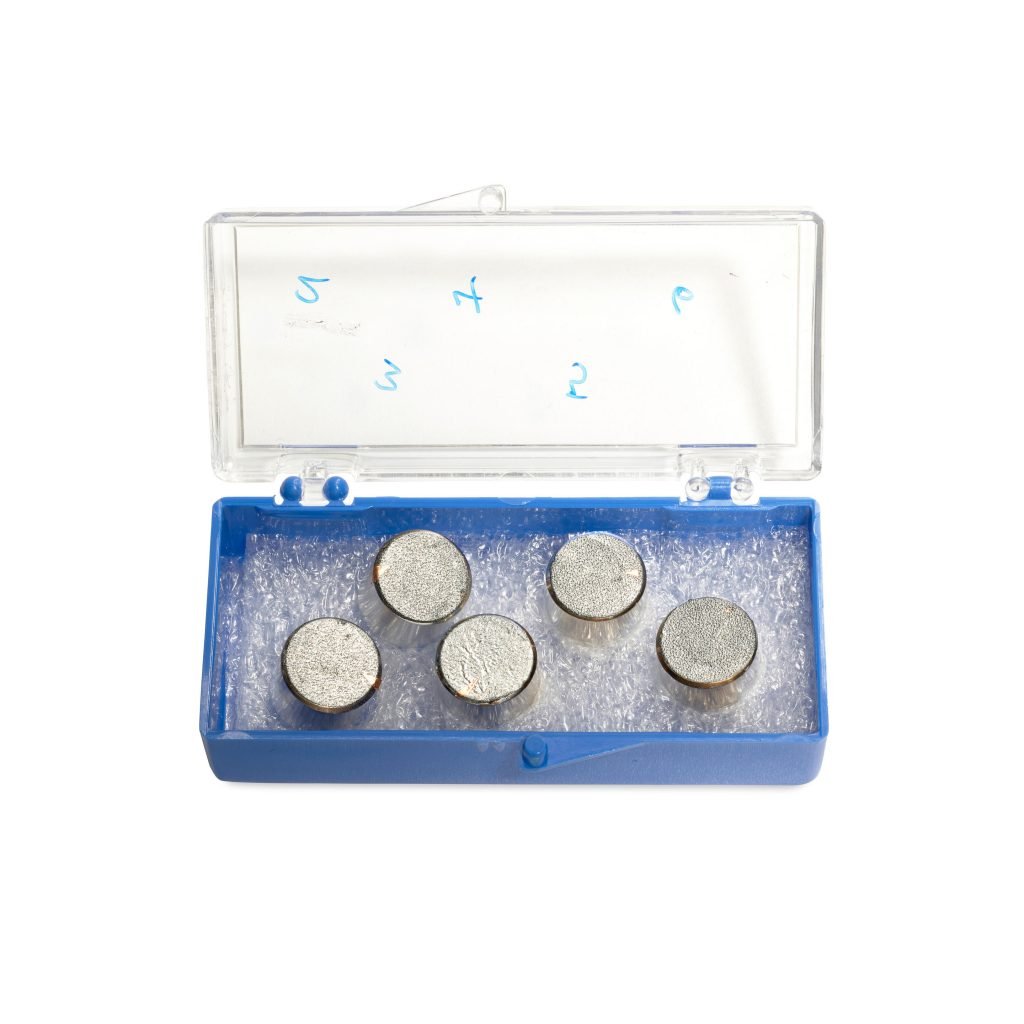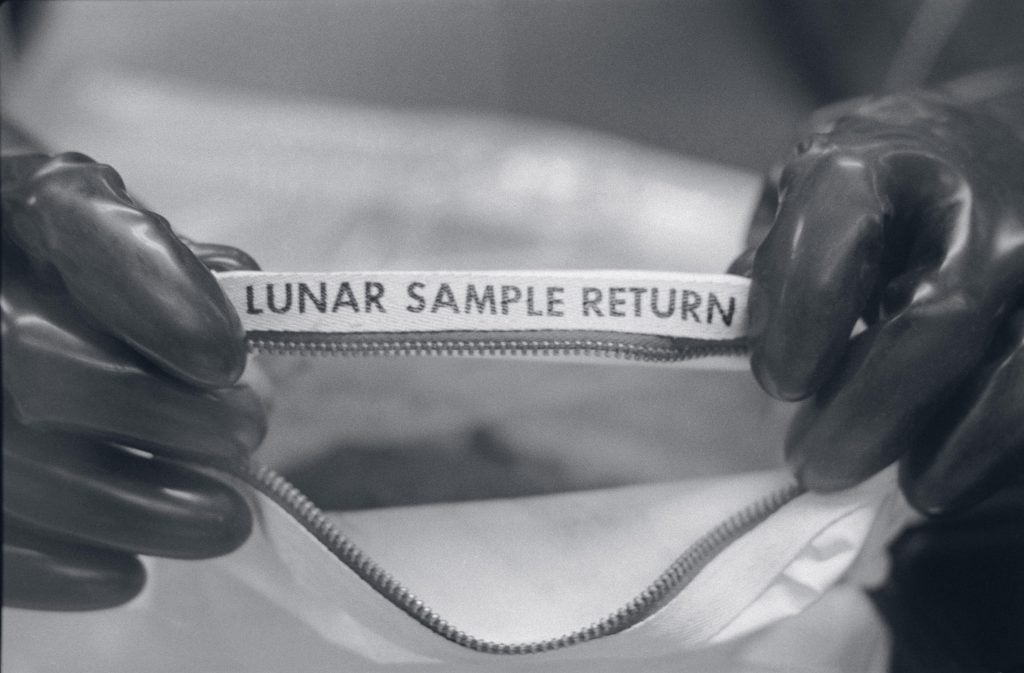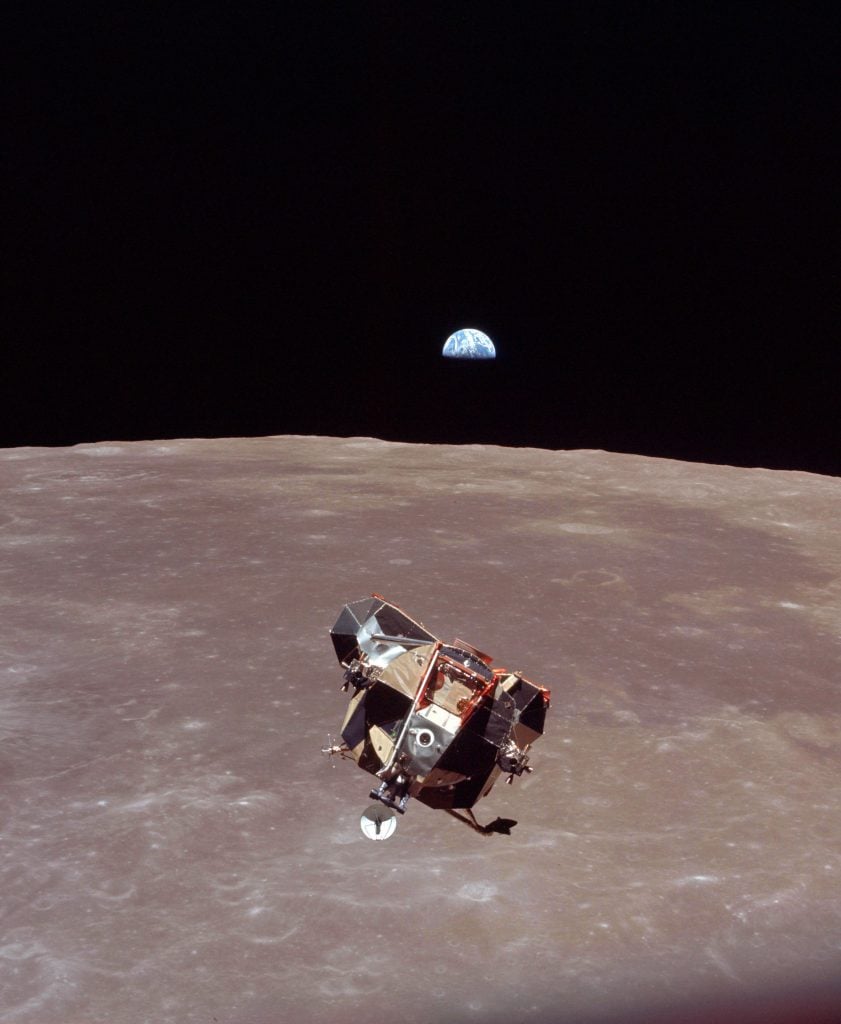Auctions
The First-Ever Sample of Dust Collected From the Moon Is Coming to Auction. NASA Thinks It Belongs to the People
After a theft and a lawsuit, the lunar sample is hitting the auction block once again.

After a theft and a lawsuit, the lunar sample is hitting the auction block once again.

Caroline Goldstein

Despite the best efforts of NASA, samples of moondust collected by astronaut Neil Armstrong during the Apollo 11 mission could fetch more than $1 million next month at Bonhams’ space history sale in New York.
The auction house is touting the lot as “the only Apollo sample that can be legally sold”—but if NASA had its way, even this sample wouldn’t be offered to a private buyer. As part of the 1969 mission, Apollo 11 astronauts including Armstrong were dispatched to land on the surface of the moon, collect materials, and return them to Earth. “We were told: Save the moon rocks first. We only have one bag of rocks. We have lots of astronauts,” according to Mike Mallory, a member of the Apollo 11 recovery team, who is quoted in the lot description.

The bag containing the lunar sample. Courtesy of Bonhams.
In the end, the mission was successful, and Armstrong scooped up a handful of the fine, sandy particles studded with rocks that comprise the specimen. When the crew returned to Earth, it remained in an unassuming Teflon contingency sample return container (CSRC) decontamination bag. At some point in time, NASA lost track of the bag, but by 2002 it was in the possession of Max Ary, the former director and president of the Hutchinson, Kansas-based Cosmosphere space museum—who was later indicted for stealing space artifacts. When Ary was convicted of money laundering, fraud, and theft, the bag became government property.

Apollo 11 in space. Courtesy of Bonhams.
A lawyer named Nancy Lee Carlson purchased the sample online for $995 from a U.S. Marshals sale in 2015, without knowing exactly what was inside the lot, which was labeled only as a “flown zippered lunar sample return bag with lunar dust.” Intrigued, Carlson sent the bag to Houston’s Johnson Space Center to learn more, and when the space agency realized the import of the bag, it refused to return the sample to her. NASA insisted that “this artifact, we believe, belongs to the American people and should be on display for the public.” Carlson sued and won, and in 2017, the sample (consigned by Carlson) was the star lot at a Sotheby’s auction marking the 48th anniversary of the Apollo 11 mission. It fetched $1,812,500 with premium.
Now, the sample is returning to auction once again on April 13, where it anchors the “Space History Featuring the First Lunar Sample” sale and carries an estimate of $800,000 to $1.2 million. Additional featured lots include an original aluminum fragment from Sputnik 1, and an Explorer 1 full-size mock-up nose cone from the Jet Propulsion Laboratory and Army Ballistic Missile Agency.